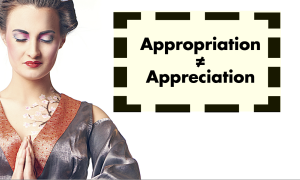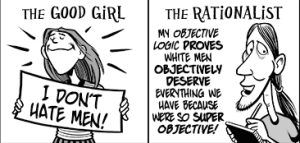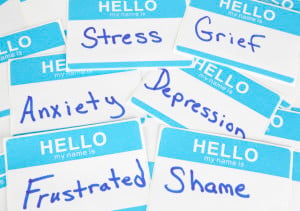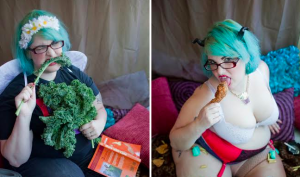
Hands together in unity and strength.
Six years ago, I became a survivor.
It took years of physical distance from my perpetrator, $1200 worth of therapy, and blocking him on every social media outlet from Facebook, to Twitter to even yes, LinkedIn, before I felt like I could come out as a victim.
On the morning of Oct. 16, I — and thousands of survivors like me — posted simple and elaborate statements about our experiences with sexual assault using #MeToo. All of a sudden, it seemed like everyone was talking about gender-based violence.
The now ubiquitous hashtag that began as a movement led by Tarana Burke of Just Be to empower women of color was going viral over 10 years later.
In the short weeks after Alyssa Milano encouraged survivors to tell their stories on Twitter, there’s been a flood of accounts from all genders, identities and income brackets.
Surprisingly, the victim-blaming and slut-shaming that usually characterizes the process has been replaced by a national reckoning with sexual assault. Thousands of people shared their accounts of #MeToo, leaving even more asking #WhatNow?
The answers to this question are vague and daunting, but one direction some survivors are taking is that of transformative justice.
A transformative justice (TJ) approach “repairs harm through accountability practices rather than punishment,” responding simultaneously to individual and systemic violence to transform communities and eradicate the structures that enable violence in the first place. A friend told me the point is to take “a more nuanced view of harm.”
I personally object to the use of the term “sexual predators,” despite how it was used as a headline in this article by editorial staff for readers to understand how everyday people frame the conversation around sexual abuse. A virtue of transformative justice is decriminalizing communities of color, which have always been subject to violence at the hands of police and the government, and I wholeheartedly agree with that.
There are countless models and ways to practice transformative justice. Below, 5 people who facilitate these processes in schools, unions, queer community and even the NFL, share advice on how to create accountability for those responsible and justice for survivors and end gender-based violence.
1. Incarceration Is Not The Answer
I have not and will not forgive my rapist. But as much as I hate what he did, and as much as I sometimes hate him, I’m more committed to a world without prisons.
Though my rapist is not a person of color, I refuse to perpetuate a system that continues to incarcerate Black and Latinx men at a rate of more than 5 and 1.4 times that of whites, respectively.
Especially in a moment in which my community is being criminally detained at a rapid pace, I know that the criminal justice system, with its deep racial flaws, won’t end rape culture. Instead, it will further tear at the seams of my community and others like it.
White feminists have traditionally responded to gender-based violence by advocating for something called carceral feminism, which relies on more “policing, prosecution, and imprisonment as the primary solution to violence against women.”
However, queer folks and women of color have historically pushed back against carceral feminism with transformative justice because the same police that are supposed to protect us are often themselves the perpetrators of harm.
In fact, 9% of all police misconduct cases involve sexual assault. Moreover, race, class, gender identity, and immigration status make certain populations — like mine — more vulnerable to police and other forms of violence.
Many survivors are aware of these dynamics and don’t seek incarceration as remuneration. At the same time, they acknowledge that sexual assault creates tremendous harm and has a huge impact.
Mia Mingus co-founded the Bay Area Transformative Justice Collective (BATJC). She says that frequently, survivors don’t want to re-criminalize the responsible party because they’re in community together.
Indeed, 70% of rape is committed by people the victim knows whether they are partners, acquaintances, family or friends. Mingus says what “we hear the most from survivors,” is that they “don’t even want an ‘I’m sorry.’ They just don’t want it to happen again.”
Adrienne Skye Roberts oversees the implementation of restorative justice in a number of schools. She also facilitates TJ processes in the queer community throughout the Bay Area.
At the K-12 level, Roberts says her work in schools with predominantly students of color is that of “shifting discipline,” or moving away from punishment as a solution.
Transformative justice centers survivor and community-based resolution outside of criminalization as a way to interrupt the kind of violence most common in communities of color.
2. Use A Lot Of Models (And Creativity)
Many people get stuck when faced with being committed to anti-police intervention and prison abolition at the same time as trying to end ongoing sexual assault in our communities. We look for simple solutions and steps.
Originally, this article sought to provide just that: a practical guide on how to facilitate a community accountability process, a fundamental part of transformative justice. But every person I talked to described the TJ processes differently. There was no common framework.
In important ways, this is the beauty of transformative justice. Roberts says, “There can be a lot of creativity. It’s not a disembodied person or model.”
Jess Boyd is the former Head of Gender and Community Development at the National Football League in London. She worked with players like Thomas Davis, linebacker for the Carolina Panthers. For the NFL, Boyd attempted “building bridges by holding space for informal conversations, storytelling, story listening and story learning.” She says that when it comes to ways to do transformative justice, “Messy is okay.”
Despite the absence of rigid rules, common principles exist. All of the organizers interviewed begin their work by centering survivor needs through ample conversation and responding to specific requests.
Beyond that, there were few similarities. Some survivors want to begin with ample face-to-face interaction with the responsible party. Some want one-on-ones with community members. Others want neither. Because transformative justice centers survivor needs, it varies.
The Bay Area Transformative Justice Collective (BATJC) uses pods, which they describe as “people in our lives that we would call on to support us with things such as our immediate and ongoing safety, accountability and transformation of behaviors, or individual and collective healing and resiliency.”
Mingus says when it comes to community accountability (CA) processes she has facilitated, “you have the survivor and then people in the survivor support team. You have the person who caused harm then people supporting them. Sometimes a core circle with reps from each and a coordinator.”
But even those guidelines can change because not everyone has a group of people they feel safe turning to, so Mingus focuses on helping people build capacity. The ultimate goal is “to support people to respond to violence within their network or community.”
GenerationFIVE, a non-profit that aims to end child sexual abuse, includes building a collective and creating safety strategies amongst its guiding practices. But the steps toward doing so are necessarily vague.
Roberts has seen many approaches work. At the end of the day, she says, “There’s no one-size-fits-all model because it’s so unique to their [survivors’] experience.”
Mingus reminds us, “There is no one way to do TJ. It looks different because communities are different, geography is different, violence is different.”
3. Focus on Preventing Abuse
Though there are countless CA and TJ frameworks, most agree with Mingus that TJ is more than a response to gender-based violence — it’s about prevention. Beezer de Martelly says retroactively instituting community accountability is challenging.
Currently, de Martelly is attempting to establish a statewide CA program for the University of California Student-Workers Union UAW 2865. The union has 16,000 members, mostly graduate student instructors.
De Martelly began initiating the process after a survivor disclosed that she had been raped by a high-up union leader. As a head steward, de Martelly quickly realized that the UAW 2865 had no internal protocol for the incident.
As a result, the union had to gauge basic knowledge of rape culture, asking members, “Do you believe the survivor? What evidence do you need beyond the testimony?”
Moreover, this standard political education occurred as the union was, “trying to get ourselves from having this conversation in a caucus space to moving toward a vote in the joint council to a process that might remove him and trying to figure out how to do that while protecting ourselves from libel.”
Transformative justice alleviates a lot of the steps de Martelly scrambled to take. People like Mingus and the BATJC try to strengthen support networks and institute accountability measures long before violence occurs through a “train the trainer” approach.
The pod model builds and fortifies existing friendships, partnerships and relationships so that when harm happens, it can be engaged. Mingus says, “Ultimately we want to prevent violence.”
3. Invest Time (A Lot Of It)
Recently, BYP100 in Chicago undertook a public CA process following an incident of sexual assault within their ranks. The harmed party and the person responsible came full circle after 15 months. And while over a year may seem like a long time, it is actually exceptional in its brevity.
For de Martelly, this labor-intensive process has taken years, the survivor approached them in 2013. The union leader (who eventually resigned) is now a tenure-track professor in the sociology department at UC Merced.
De Martelly and their fellow organizers haven’t faltered, “a lot of people stepped away […] but a few of us persisted.” Their work continues to this day.
Because gender-based violence functions on multiple levels from institutional to interpersonal to individual, any sort of shift — let alone a drastic one — can take years.
Boyd focused on “accountability, transforming attitudes of men and those who do harm, and creating allies for gender equity.”
She says those embarking on transformative justice should anticipate, “very slow, very incremental changes.” It takes a lifetime to learn and justify gender-based violence, the time it takes to heal from it reflects the long socialization process.
4. It’s About Change
Ray is a youth educator and longtime organizer. Ray has never seen a community accountability process be completely “successful” in large part because society still exists within wider oppression. Ray says that even in politically radical communities “we’re in scarcity, we act quickly, we take our trauma out on each other.”
Continuing heteropatriarchal violence within social justice movements can be a byproduct of a number of factors: not wanting to lose a valued organizer; a deeply ingrained (patriarchal) refusal to believe survivors.
Ray continues, “We silo our issues and protect our groups.” Activists can wind up working toward racial justice at the cost of gender-based violence within movements.
Transformative justice seeks to uproot both interpersonal beliefs and institutions. Roberts says restorative justice is hard because it requires a total “paradigm shift.” She continues, “Restorative justice only works in a restorative system and we don’t have that.”
Between 1970 and 2014, the number of women incarcerated has ballooned 14 times over, women in jail are now the fastest growing carceral population.
Earlier this month, President Trump decided to end a special deportation reprieve for thousands of Nicaraguans who survived hurricanes, earthquakes and other natural disasters. 56 percent of Native women have experienced sexual violence — 90 percent of the time at the hands of a non-tribal member.
With such wide-scale oppression, community accountability circle-ups and conversations can seem minuscule.
From the outside, transformative justice seems like simply centering what Boyd calls “the attitudes, culture and silence that perpetuate gender violence and toxic masculinity.”
But in order to build stronger, more vibrant and durable resistance movements, organizers who fight deportation and incarceration must begin by unpacking their own patriarchal actions and beliefs.
In big and small ways, activists must make community spaces safe before movement work can take place. Mingus says, “We all have things we need to apologize for.”
***
While writing this article, I confronted my rapist for the first time in five years. My partner, therapist and close friends supported me as I worked through the residual anger, frustration and boundaries that I needed to take this step.
The microcosm of this 1500 word story illustrates that the lion’s share of transformative justice work is done by people impacted the most by gender-based violence. Queer, femme and trans women of color are often those most committed to ending the heteropatriarchy that harmed them.
It is people who must hold their own trauma who are the most motivated to alleviate that of other survivors. Mingus says “people talk about TJ as though it’s ‘soft’ [but] it’s one of the hardest things you’ll ever have to do.”
Indeed, no one I spoke with told me about a seamless community accountability process or that they found the work easy. Instead, they echoed each other’s frustrations.
As Ray says: “It takes a love of humanity to pull this shit off.”
[do_widget id=’text-101′]
Kim is a teacher, scholar and organizer finishing her PhD in Ethnic Studies and Gender, Women’s and Sexuality Studies at the University of California, Berkeley. Her scholarship and community work engages the intersection of cross-racial coalitions, gender inequality, class oppression and queer sexuality. Kim has worked extensively with the LGBTQ Youth Space, is a collective member of Third Woman Press: Queer and Feminist of Color Publishing and member of Theatre First. Find more of Kim’s writing here.
Search our 3000+ articles!
Read our articles about:
Our online racial justice training
Used by hundreds of universities, non-profits, and businesses.
Click to learn more




















